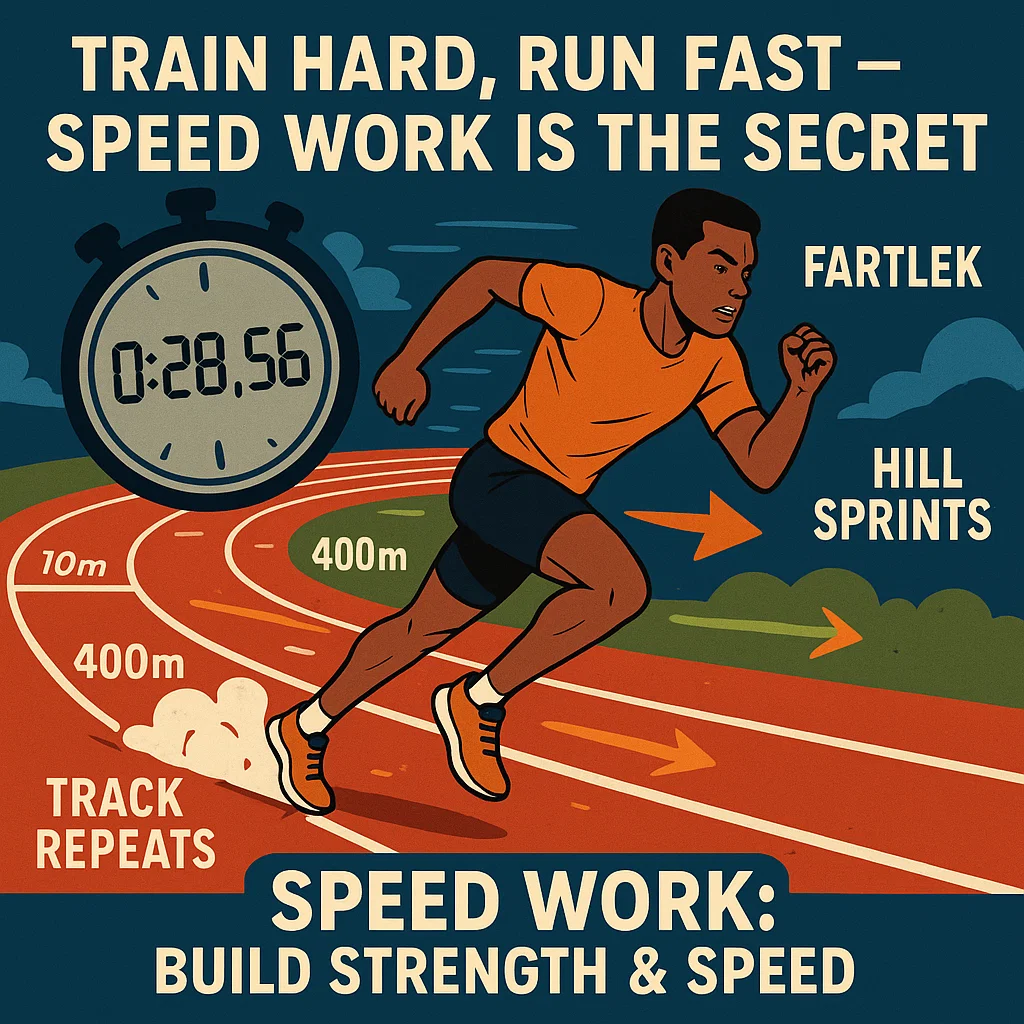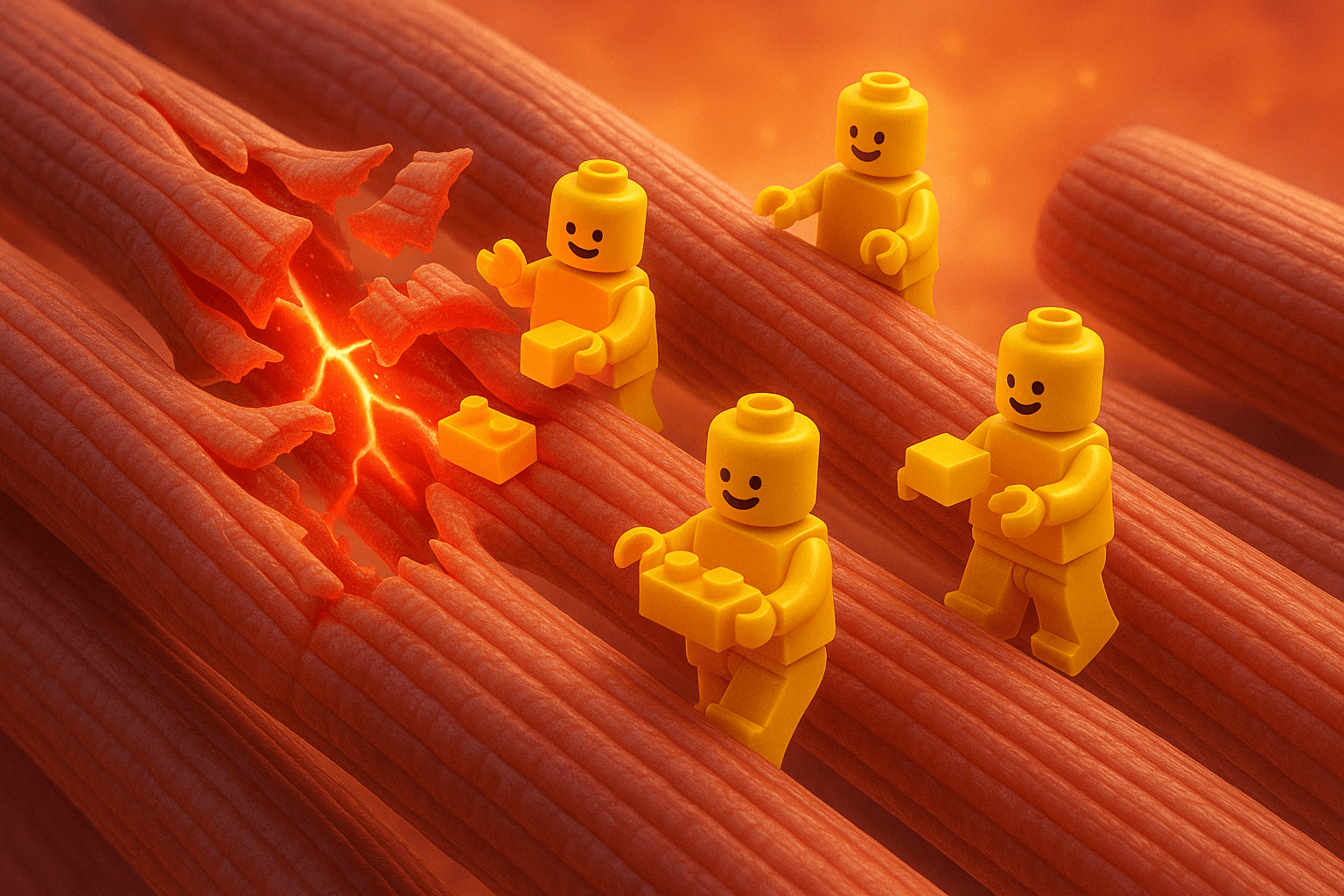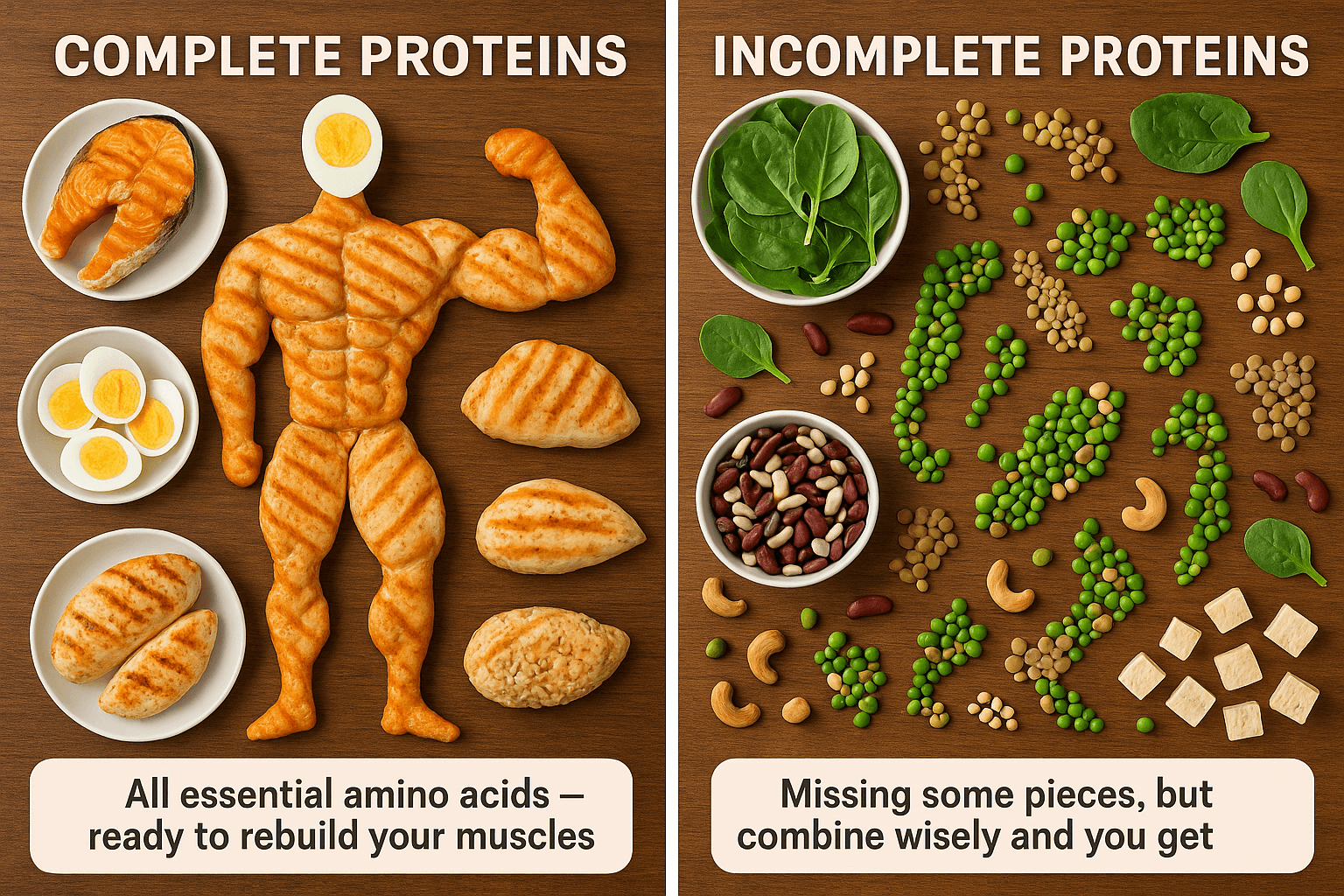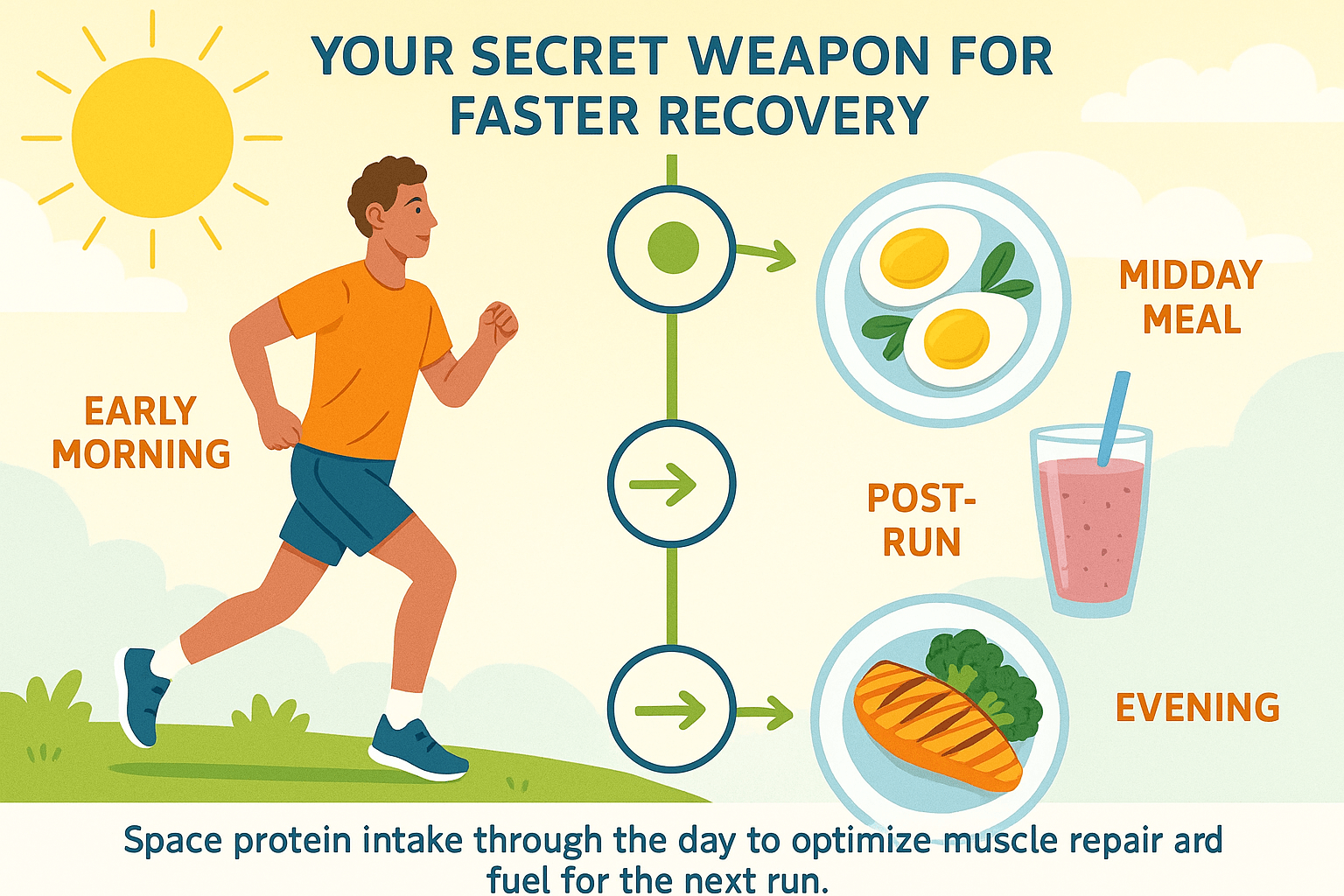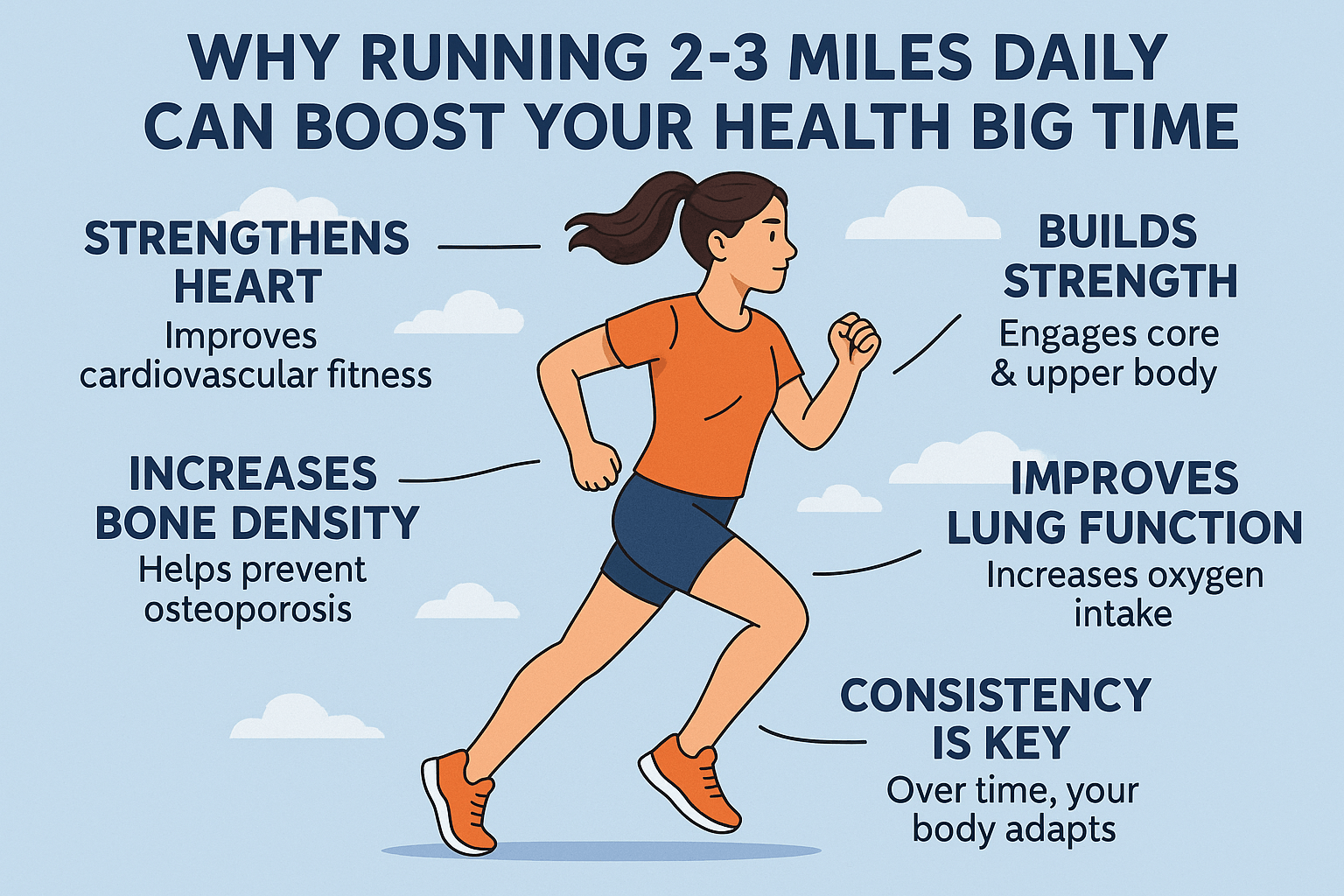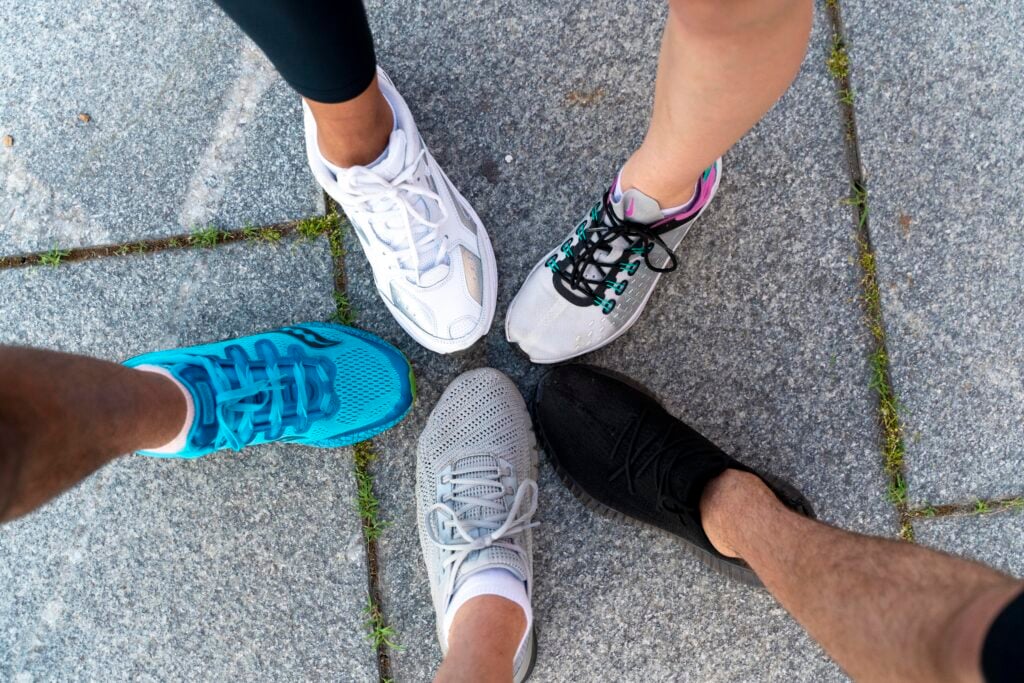Ever feel like you’re grinding out the miles, doing the work, and still… nothing’s changing?
Your pace won’t budge.
Your long runs aren’t getting easier.
And your body? Feels like it’s just treading water.
Welcome to the plateau. It happens to all of us.
I’ve hit it more times than I can count—early on, after a big race, or right when I thought I was about to level up
. One week you’re cruising, and the next you’re stuck in quicksand, wondering what you’re doing wrong.
Here’s the good news: this doesn’t mean you’ve failed. It just means something’s off in your training—and that’s fixable.
The trick is figuring out what’s actually holding you back.
And trust me, it’s usually not just bad luck or a slow metabolism. It’s habits. Oversights. Maybe even stuff you don’t realize is wrecking your recovery or blocking your gains.
So let’s break it down.
Here are 8 common reasons runners get stuck—and how to fix each one. No fluff. Just real talk and real solutions to get you running stronger again.
Overtraining – When Hustle Turns Into a Crash
Look, I love the grind.
But more miles and more intensity don’t automatically mean more gains.
In fact, pushing hard all the time without giving your body time to bounce back? That’s a fast track to burnout.
I’ve coached runners who trained like machines—until everything started falling apart.
Sluggish pace.
Trouble sleeping.
Constant minor injuries.
You know the drill.
The Signs:
- Legs feel heavy all the time
- Resting heart rate creeping higher than usual
- Sleep sucks (can’t fall asleep or wake up groggy)
- Mood swings, irritability, no motivation
- Getting sick more often than usual
- Paces that used to feel chill now feel brutal
That’s your body yelling, “Back off!”
Overtraining really sucks.
The Fix: Train smarter—not harder.
Recovery is where the magic happens. Your body doesn’t get stronger during a workout—it gets stronger when you rest after it.
Here’s what I tell my runners: for every hard day, give yourself an easy one. And at least one full rest day a week. No running, no “just a shakeout jog.” Total rest. Nap, stretch, chill.
Sample rhythm?
- Hard days: Monday, Wednesday, Saturday
- Easy runs or cross-train: Tuesday, Thursday, Friday
- Full rest: Sunday
One runner I coached was stuck for months. All gas, no brakes. We added two recovery runs and a Sunday off. Within weeks, his long run pace dropped by almost a minute per mile—without doing anything new.
Just letting his body catch up.
Science backs this up. Studies show proper rest improves endurance, reduces injury risk, and helps you train longer, more consistently. And guess what wins long-term? Consistency.
So if you’re feeling wrecked? Back off. Rest. Your next breakthrough might just be a nap away.
Underfueling – Running on Fumes
This one’s sneaky, especially if you’re chasing fat loss or trying to “lean out.” But if you’re not eating enough to fuel the work, you’re not gonna see progress.
You’re just gonna get tired, cranky, and flat-out slower.
Your body’s like an engine. It needs gas. You wouldn’t try to drive cross-country on half a tank, right? So why expect top performance on too little food?
The Red Flags:
- No energy during runs
- Poor recovery—still sore 3 days later
- Moody, foggy, tired all the time
- Slower pace despite training more
- Random weight plateaus or even loss of fitness
There’s actual science behind this. When you don’t eat enough, especially with serious training, your body enters a state called low energy availability. That’s when you don’t have enough fuel left over—after your workouts—to run your basic systems.
Hormones get messed up, recovery tanks, metabolism slows, and boom—your gains vanish.
The Fix: Fuel like you mean it.
Running 5 miles burns roughly 500 calories. That’s not a suggestion—it’s a bill your body expects you to pay back.
If you’re training regularly, you’ll likely need 2,400–3,000+ calories a day, depending on size, pace, and mileage.
Your diet should be:
- Carb-heavy (yes, carbs are your friend—whole grains, fruit, rice, starchy veg)
- Protein-packed (lean meats, eggs, tofu, legumes—your muscles need this to rebuild)
- Fat-fueled (avocados, nuts, olive oil—don’t fear the fats)
Hydration counts too. Even mild dehydration can kill your performance. Aim for around 60–90 oz of water daily, more if it’s hot or you’re logging big miles.
And if you’re trying to lose weight? Do it gradually—aim for just a 300–500 calorie deficit max. More than that, and you’re draining your tank dry.
Tough Weather Runs: How to Stop Letting the Forecast Wreck Your Confidence
Here’s a rookie mistake I see way too often: trying to hit your usual pace on a day that feels like Mother Nature’s out for revenge.
Whether it’s blazing hot, swampy with humidity, or so cold your eyelashes freeze—weather changes everything.
And yet, runners beat themselves up like they lost fitness overnight just because they couldn’t maintain their “usual pace.”
I’m guilty of thiss, too.
Pushing when I should’ve backed off, ended up overheated, lightheaded, and pissed at myself. Lesson learned: adjust, don’t suffer.
Heat Doesn’t Just Feel Harder – It Is Harder
Running in the heat isn’t about “toughing it out.” It’s literally harder on your body.
When it’s hot and humid, your heart’s working overtime just to cool you off.
Your sweat doesn’t evaporate properly, your core temp rises, and suddenly every mile feels like a slog through molasses.
And don’t just take my word for it. Here are some numbers to keep in mind:
- For every 5°F above 60°F, studies show your pace can drop by 20–30 seconds per mile.
- A deep dive into Boston Marathon results found that a 1°C rise in temperature slowed finish times by nearly 2 minutes.
- One year at the London Marathon, the temp hit 75°F (24°C)—not exactly Sahara heat—and the average finisher came in 20 minutes slower than usual.
So yeah, it’s not just you. Everyone slows down in the heat.
Cold Can Be Tricky, Too
Cold temps (down to around 40°F/5°C) actually help your performance—at least for a while.
But once you’re running in freezing temps, things change. Your muscles stiffen up, breathing cold air gets rough, and you’re wearing five layers like a running burrito.
One study found a 5% drop in aerobic performance at –20°C (–4°F). But for most runners, the risk isn’t the cold itself—it’s the illusion that you can go faster since your heart rate stays lower. Then boom, you overdo it without realizing it.
So What Do You Do?
- Run by effort, not by pace. Forget the GPS when it’s 90°F with 90% humidity or snowing sideways.
- Hydrate like it matters—because it does. Even in cold weather.
- Tweak your run times. Go early or late when it’s hot. Or hit the treadmill if it’s unsafe outside.
- Shorten the run or add walk breaks. That’s not weakness—it’s smart training.
In cold weather? Layer up, warm up longer, and watch for slippery spots. The air won’t kill your pace unless you’re in the Arctic, but running like a deer on ice will.
Tough-weather runs don’t just build fitness—they build grit. So yeah, they suck now, but they pay off big later.
I tell my runners: leave the ego at home, run smart, and remember—your body’s still working hard even if the watch says otherwise.
Why Running the Same Route at the Same Pace is Killing Your Gains
Here’s another one I see all the time—same distance, same loop, same pace, every day.
It’s comfortable, it’s familiar… and it’s a fast-track to nowhere.
Look, I get it. Habit is great.
It keeps you consistent. B
ut if every run is that same “kinda hard, kinda easy” effort, guess what? Your body stops adapting. You stall out. Zero progress.
You’ve landed in the gray zone:
- Not slow enough to recover.
- Not fast enough to improve.
I hate to be stuck in this training limbo. And I bet you feel the same.
Why You’re Not Getting Faster
Training is a stimulus. Do the same thing over and over, and your body goes, “Cool, I’ve got this,” and stops trying.
You need variety—different speeds, different distances, different challenges—to keep your fitness moving forward.
In fact, if you only train 2–3 times a week, you can still make progress—but your training better evolve or you’re just spinning your wheels.
And science backs it up.
- An 8-week HIIT study in Medicine & Science in Sports & Exercise found that interval training bumped runners’ VO₂ max by 6–7%, and their heart’s stroke volume jumped nearly 10%. That’s a huge deal for endurance.
- Same with lactate threshold—mixing tempos and intervals helps you stay strong longer before your legs turn to Jell-O.
Here’s the Fix: Mix. It. Up.
You don’t need some fancy program. Just a balanced week. Something like:
- 1 long, chill run
- 1 tempo run (comfortably hard, not a race)
- 1 interval session (e.g. 4 × 3 minutes fast with 2 min jog)
- Easy runs to fill the gaps
- Rest days to keep your body from hating you
Add strides. Throw in a fartlek. Try a hill workout. Doesn’t need to be fancy—just different.
I’ve seen runners stuck at the same pace for months, then BAM—they add two speed workouts a week and suddenly PR their next 5K.
As I always say:
“If you always do what you’ve always done, you’ll always get what you’ve always got.”
Inconsistency: The Silent Fitness Killer
Let’s be honest: we all hit those “meh” weeks. You miss a run here, skip a few sessions there, and before you know it, your training plan’s collecting dust while your fitness starts slipping out the back door.
I’m not calling you lazy—life happens. Work ramps up. Kids get sick. You lose motivation.
But let’s not pretend those missed runs don’t add up.
Inconsistent training is one of the biggest reasons runners hit plateaus—or worse, go backwards.
Running rewards the grind. Not the perfect workouts or the superhuman long runs—just showing up consistently.
Think of it like pushing a heavy wheel. Each workout gets it rolling. But if you stop? That wheel slows down fast. Miss a week here, take another few days off there… now you’re starting over again. Sound familiar?
If there’s a secret to running success, it’s consistency over time. No other goal matters without it.
The Fix? Build Consistency You Can Stick To
Drop the all-or-nothing mindset. Instead, build a realistic training schedule you can actually stick to.
If six days a week is too much? Fine. Lock in four solid days, every week.
That’ll do more for your fitness than bouncing between zero and six like a yo-yo.
Science backs it:
- To maintain aerobic fitness, you need at least two runs a week.
- Want to improve? You’ll need three to five.
- A study from the University of Colorado even stated it plain: “Aerobic training 3 to 5 days per week will improve cardiovascular fitness. Training just 2 days will help you maintain.”
Bottom line? You don’t have to run every day. But you do need to run regularly.
My best tips on staying consistent:
- Treat your runs like appointments. Non-negotiable.
- Join a running group or partner up. It’s harder to bail when someone’s waiting.
- Sign up for a race. A race on the calendar = fire under your feet.
- Track your progress. Apps, journals, old-school calendars—it doesn’t matter. Just keep score.
- Busy week ahead? Don’t go dark. Even 2 quick runs will keep the wheels spinning.
Consistency doesn’t mean perfection. You’ll miss a day here and there. That’s fine. What matters is getting back out there.
Keep building brick by brick—and that fitness base gets rock solid.
Oh, and don’t forget to progress slowly.
The American College of Sports Medicine recommends the classic 10% rule—don’t bump up weekly mileage by more than 10%.
You’re not trying to win the week. You’re trying to win the year.
So yeah—run like the tortoise. Steady. Relentless. And eventually? You’ll outrun the version of yourself who couldn’t stay consistent.
Running Through the Decades: Age Is Not Your Excuse
Let’s get this straight—you’re not too old to get faster.
But you might be too stubborn to train differently.
One of the biggest mistakes I see in runners over 40? Either they ignore age altogether and try to train like they’re still 25… or they use age as an excuse to stop pushing. Both approaches are a one-way ticket to frustration—or worse, injury.
Here’s the real deal: your body changes as you age. That doesn’t mean you can’t improve. It just means you’ve got to train smarter.
What Changes with Age?
- VO₂ max (your cardio engine) drops about 1% per year after 40
- Max heart rate goes down
- Muscle mass and strength gradually decline (hello, sarcopenia)
- Recovery slows—your tendons and muscles need more TLC
A 2016 review called out the big three limiters in aging runners:
- VO₂ max
- Heart stroke volume
- Muscle mass
Still, it’s not all downhill. Regular training slows these declines. Big time.
In fact, race data from 190,000 runners in a 15K showed times stay pretty stable through your 30s. After 40, they drop about 1% per year on average.
So yeah—by 50, you might be 10% slower than at 40. But that’s not bad—it’s just different.
The Upside of Aging (Yes, There Is One)
While raw speed fades, endurance and mental strength often increase. That’s why you’ll see 50- and 60-year-olds crush marathons and ultras. They’ve got patience. They know how to pace. And they’ve trained their bodies to go long.
So stop comparing your mile splits to your 25-year-old self. Instead, ask:
How well am I training for who I am today?
Tips for Mastering Your Master’s Years
- Recover like it’s your job. Rest, sleep, fueling, and low-impact cross-training.
- Lift weights. You’re losing muscle faster now—fight back.
- Shift to quality over quantity. Hit key workouts with purpose. Fewer junk miles.
- Listen to your body. Little injuries linger longer. Don’t power through—adapt.
Age doesn’t end your PR days. It just changes how you chase them.
So whether you’re 45 and grinding for a sub-4 marathon or 60 and running your first 10K, don’t buy into the “too old” myth. You’ve got miles left—just be smart with how you spend them.
The Fix: Age Doesn’t Mean Slowing Down – It Means Training Smarter
Alright, let’s get this out of the way first: you’re not broken because you’re over 40. You’re just running with a different rulebook now—and trust me, that’s not a bad thing.
I coach a lot of runners in their 40s, 50s, 60s, and beyond who are still crushing it—because they’ve learned to train smart, not just hard.
Here’s what that looks like:
1. Recovery Isn’t Optional – It’s the Priority
Look, your body’s not bouncing back like it did at 25—and that’s okay. But it does mean you’ve gotta respect the rest days.
- You might only hit one speed session a week instead of two.
- You might toss in an extra easy day after long runs.
That’s not slacking—that’s longevity.
Listen to your body. That little ache in your calf? That used to go away overnight.
Now it might need two days and a lacrosse ball. Don’t ignore the whispers, or you’ll be sidelined when they turn into screams.
Also, mix in some low-impact stuff. Cycling, pool running, swimming—they keep your engine running without beating the hell out of your joints.
2. Strength is Non-Negotiable
Let’s be real: after 40, you’re losing muscle if you’re not lifting.
That’s just biology. But here’s the good news—you can fight it, and win.
Twice a week, hit the weights. Doesn’t have to be fancy:
One review found that master’s runners who added heavy resistance training saw serious gains.
We’re talking better running economy and performance, despite age-related slowdowns.
And no, you’re not gonna “bulk up.” You’ll just get stronger, more stable, and less injury-prone. That means fewer tweaks, more speed.
Throw in some yoga or Pilates now and then, too. Flexibility, balance, coordination—they all slide as we age. You gotta train that stuff if you wanna keep your stride clean and upright.
3. Shift the Goalposts, Not the Passion
Here’s the mental game: you’re not 25 anymore. Cool. So what?
Maybe your 5K PR days are behind you, but now it’s about age group wins, new distances, or simply running smarter than last year’s version of you.
I’ve seen 60-year-olds with age-graded PRs that blow the socks off younger guys. You might not hit your old times, but you can still hit excellence relative to your age—and that’s something to be proud of.
You’re wiser now. Your race strategy’s tighter. Your form’s cleaner. And you’ve got grit that the 20-somethings haven’t earned yet. Use it.
4. Don’t Lose the Fire (AKA Keep Running Fast)
Your VO₂ max dips with age—sure. But “use it or lose it” is the real deal here.
You don’t have to crush 800s every week, but don’t stop running fast altogether.
Do them with more recovery, but don’t drop them. They keep your top-end sharp.
Without them, you just slide into the “forever slow jogger” zone—and that’s not where growth lives.
The Most Underrated Performance Booster: Sleep
Here’s a hard truth I had to learn the painful way: you can’t out-train bad sleep.
If you’re burning the candle at both ends, waking up at 5 AM for a tempo run on 5 hours of sleep, thinking you’re being hardcore… you’re just grinding yourself into a hole.
Sleep is where the magic happens. That’s when your body actually rebuilds muscle, balances hormones, and locks in the training gains.
What the Science Says
Even short-term sleep debt wrecks your running—reaction time, coordination, strength, endurance—all tank.
Ever tried intervals on no sleep? Yeah, you know the feeling. It sucks.
The Fix: Make Sleep Part of the Plan
You want real gains? Then treat sleep like training.
- Shoot for 7–9 hours a night.
- Shut off the screens early.
- Create a wind-down routine (stretch, read, breathe).
- Keep your room cool, dark, and quiet.
And if you’re training hard? Consider a mid-day nap or an earlier bedtime.
Progress Is Still Possible – Even When It Feels Like You’re Stuck
Alright, let’s be honest — plateaus suck.
You’re training hard, doing the work, logging the miles… but nothing’s happening. No speed gains. No endurance boost. Just the same old grind.
It’s frustrating as hell — but it’s also completely normal.
Every runner hits a wall at some point. I’ve been there more times than I can count. But here’s the good news: plateaus aren’t a dead end. They’re just feedback.
We’ve talked through the 8 usual suspects — too much training, not enough recovery, poor fueling, life stress, age, weather, you name it. And guess what? Every one of those has a fix.
You’ve just gotta be honest with yourself and tweak the right dial.
The Training Puzzle
My favorite way to look at plateaus? Like a training puzzle.
Something’s off in the mix. Maybe you’re hammering every run and need to ease off. Or maybe you’ve gotten too comfortable and it’s time to bring back those spicy intervals.
Maybe you’re skipping sleep and calling it toughness — when what your body needs is 8 hours and a rest day.
There’s always a lever you can pull — volume, intensity, nutrition, mindset, recovery. Don’t be afraid to experiment. Running’s not one-size-fits-all, and your body’s always changing.
The Reality of Progress
Also, remember — progress isn’t a straight line.
Some weeks you fly. Some weeks you crawl. That doesn’t mean you’re broken. It means you’re human. And sometimes, that slow patch? It’s the calm before your next breakthrough.
Sure, there are limits. Life gets in the way. You’ve got jobs, kids, bills, injuries, birthdays, bad weather, and bad days.
That doesn’t mean you’re done growing as a runner. It just means the growth might look different now.
Maybe you don’t chase a PR this cycle — maybe you focus on building consistency, strength, or joy.
Because here’s the truth: hitting a plateau isn’t failure — it’s feedback.
And if you listen to your body, adjust your approach, and stick with it? That next level will come.
Coach’s Advice
So here’s what I’ll tell you, as your coach or your running buddy:
👉 Keep showing up.
👉 Keep learning.
👉 Don’t quit on yourself.
Run new routes. Mix in trail days. Chase a fun run. Train with friends. Celebrate tiny wins. Keep the fire alive.
Because when the joy stays in the run, the progress always follows.
Real Talk: You’re Not Alone in This
Every runner — from newbies to Boston qualifiers — has felt stuck. What separates those who break through is how they respond.
You’ve got the knowledge now. Use it. Tweak your training. Rest smarter. Fuel better. Run happier.
And if you’ve busted through a plateau recently? Or you’re stuck in one now and working through it — share your story. Seriously. Drop a comment. DM someone. Post it.
That struggle you’re facing might be the exact thing someone else needs to hear.
Let’s build each other up. The road’s long, but we’re all on it together.
You’ve got this. Keep moving forward.



